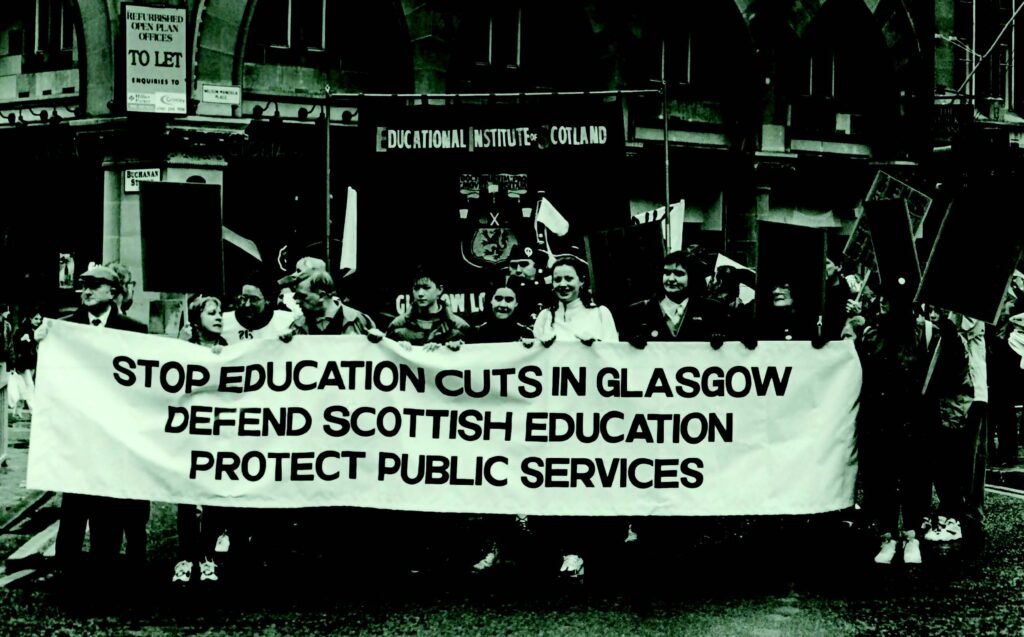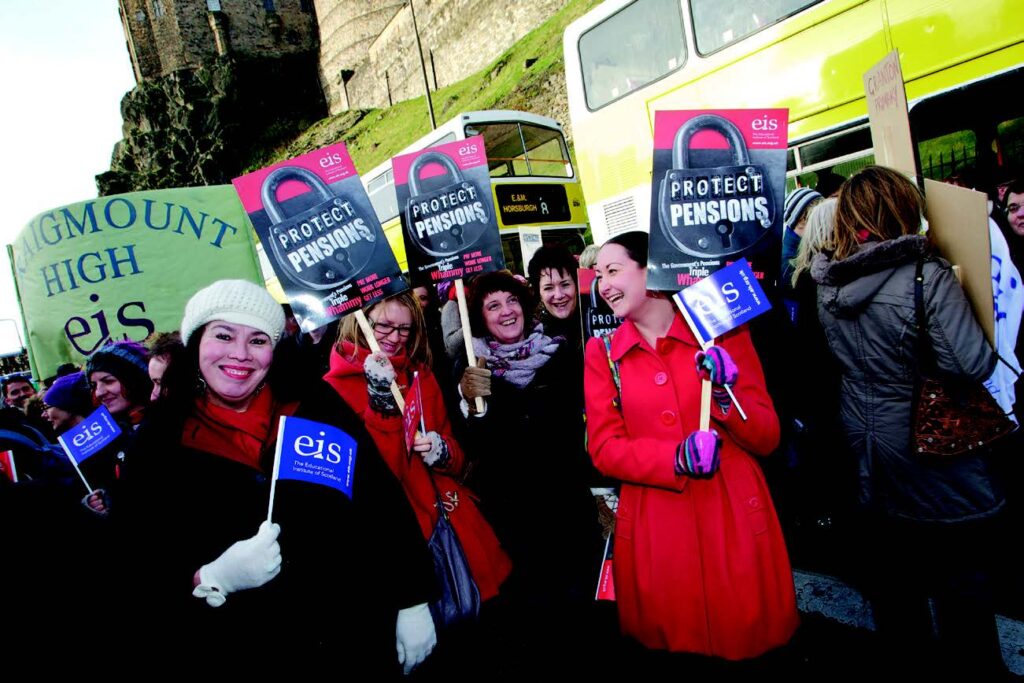
As part of the celebrations to mark the 175th Anniversary of the foundation of the EIS, a new book has been commissioned exploring the history of the Institute. Written by long-time Times Educational Supplement journalist Adi Bloom, the book will be premiered at the EIS Annual General Meeting in June and published shortly afterwards. Here, the SEJ previews some of the key sections.
On 18 September 1847, around 600 teachers, from all parts of the country, attended a meeting in the hall of the High School, Edinburgh, to give birth to the Educational Institute of Scotland. Although several local teacher associations predated this event, the creation of a national teacher union, the Educational Institute of Scotland – a global first – was a momentous step.
Throughout its history, the EIS has been an authoritative voice in Scottish education, but in celebrating this anniversary we have chosen to focus more on the period from the late 1960s onwards, which saw the EIS transition from being a venerable institution into a modern, campaigning, combative and effective trade union.
THE BEGINNINGS OF THE EIS
“Scotland is the first country in the world that has a national association of all her teachers, resolved and determined to provide their country with the best system of education they can devise.” These were the words of the first President of the EIS, Dr Leonhard Schmitz, marking the establishment of the Educational Institute of Scotland in September 1847.
Until that time, there had been a range of teachers’ organisations across Scotland, serving specific and diverse groups of teachers. However, in 1846, the Glasgow Teachers’ Association made the case for setting up a number of local organisations across Scotland that, en masse, would form a national body of teachers. The aim was that this body would encompass all types of teachers, from all denominations…
In the months that followed, one final, important decision was taken…The Association of Teachers in Scotland had decided on a change of name. And so, when the new organisation was formally established on 18 September, it was as the Educational Institute of Scotland.
FROM VENERABLE INSTITUTION TO CAMPAIGNING TRADE UNION
When the EIS was established, in 1847, its primary purpose was the certification of teachers. Of course, salaries and working conditions were constant issues for members. However, for a long time – well over a century – EIS members saw themselves primarily as belonging to a professional association, rather than a trade union.
In 1971, however, the EIS became affiliated to the Scottish TUC, and to the TUC in 1977 – thus formalising the process of becoming a trade union, rather than simply a professional association. The affiliations signposted broader developments within the union.
More broadly the 1970s had brought in a new era of trade union activism as workers across all sectors fought for higher pay in the face of soaring inflation and the threat of privatisation.
It was within this context that the EIS’s character as a trade union was forged…

TWO SIDES OF THE SAME COIN
It was not as simple, of course, as a one-time professional association transforming itself into a trade union. The EIS continues to fulfil its functions both as trade union and as professional association. For example, EIS members continue to sit on state organisations and curriculum bodies, and to commission research into aspects of education.
Fulfilling those two separate roles is a balancing act. On the one hand, the union could be involved in major disputes over pay. And, on the other hand, representatives of both sides of that dispute could be sitting on the same curriculum-development board, cooperating on a regular basis. Maintaining this professional collaboration is not always easy, especially during periods of quite intense industrial relations, but it brings a synergy that amplifies the EIS voice in both spheres.
This article includes selected extracts from the opening chapters of the EIS book 175 Years Strong, set to be published this summer. Other topics covered in the book will include: negotiating on teachers’ pay & conditions; protecting education & promoting equality; women in the EIS; combating racism; campaigning for LGBT rights; and much more.


